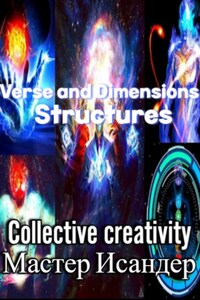A pointverse is a universe with 0 spatial dimensions meaning that it exists as a single point.
It contains no more space or positions inside it other than that single unique infinitely small position. It has no size at all. The point it exists as corresponds to the mathematical definition of a point which possesses no size or size equal to zero.
It can exist without time as well, with no time dimensions at all, existing in a perpetual state of "timelessness". Or it can have one or more temporal dimensions as normal.
It can be seen as a singularity as well.
Protoverse
A protoverse is a specific case of a pointverse.
A protoverse is said to exist within its own point of origin; the "singularity" or infinitesimally small point just before the Big Bang. In particular, it can be used to refer to the point leading up to our own universe.
The instant a protoverse "exists", it immediately turns into a Big Bang which like most universal births, creates the universe over a span of billions of years.
In the same way that this "explosion" creates the normal space dimensions of the resulting universe from the previous existing 0 space dimensions in the pointverse, it is possible that any time dimensions inside the resulting universe are created in that event and do not exist before it. In that case the pointverse existed out of time and there exists no "before" the Big Bang event for it, even though it itself already existed without time. It could be said that such protoverse was the cause for the Big Bang but not that it existed before the Big Bang.
Brane collisions create protoverses at their impact point, which then explode outwards into new branes.
An infinitesimal particle
According to modern physics, our universe consists of a huge number of particles that interact with each other within the framework of the fundamental forces of nature. However, there is a theory that each of these particles itself can be a miniature universe containing multiverse structures and entities.
The idea is that inside each infinitesimal particle there is its own world, with its own laws of physics and entities. These multiverse structures can contain a variety of objects, from galaxies and star systems to the smallest elementary particles.
The key point in this concept is that each structure of the multiverse within a particle can interact with other structures, creating complex networks of interconnections. This opens up opportunities for the emergence of new physical phenomena and properties that we cannot observe in our macroscopic universe.
Thus, the idea of multiverse structures and entities inside infinitesimal particles is a fascinating concept that can shed light on the fundamental laws of nature and expand our understanding of the world around us.
An infinitesimal particle contains a Woodin cardinal, supercompact cardinal
The Higgs Boson
The Higgs boson is an elementary particle that plays an important role in the standard model of elementary particles, the theory describing fundamental particles and their interactions.
Named after physicist Peter Higgs, the Higgs boson is a quantum excitation of the Higgs field that fills the entire universe. It is assumed that the Higgs field is responsible for the mass of other elementary particles, such as quarks and leptons.
According to the standard model, particles interact with the Higgs field and acquire their mass. Without the presence of the Higgs field, all particles would be massive, and the interactions between them would be completely different.
The Higgs boson was discovered in 2012 as a result of experiments at the Large Hadron Collider (LHC) at CERN (European Organization for Nuclear Research). This was an important moment in science, as it confirmed the existence of the Higgs field and its quantum excitation, the Higgs boson.
The discovery of the Higgs boson is of great importance because it helps explain how particles acquire mass and why some particles are more massive than others. It also confirms the existence of the standard model of elementary particles and gives us a deeper understanding of the structure of our universe. The Higgs boson and its properties continue to be the subject of active research in particle physics, as its more detailed study can lead to new discoveries and expand our understanding of the fundamental laws of nature. The Higgs boson contains the hypercompact cardinal
Neutrinos
A neutrino is an elementary particle, which is one of the fundamental particles of the standard model of elementary particles. The neutrino has no electric charge and interacts very weakly with other particles and fields, which makes it very difficult to detect.
The neutrino has spin 1/2 and is a fermion, which means that it obeys the Pauli principle and Fermi-Dirac statistics. There are three different types of neutrinos: electron neutrino, muon neutrino and tau neutrino corresponding to electron, muon and tau lepton respectively.











